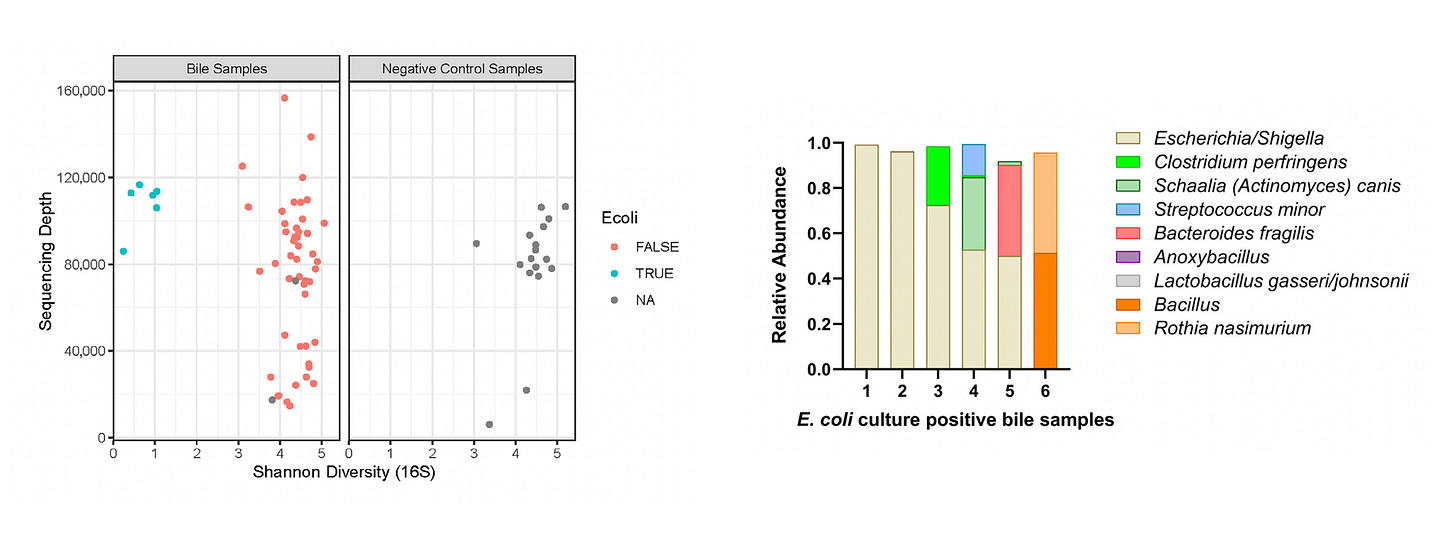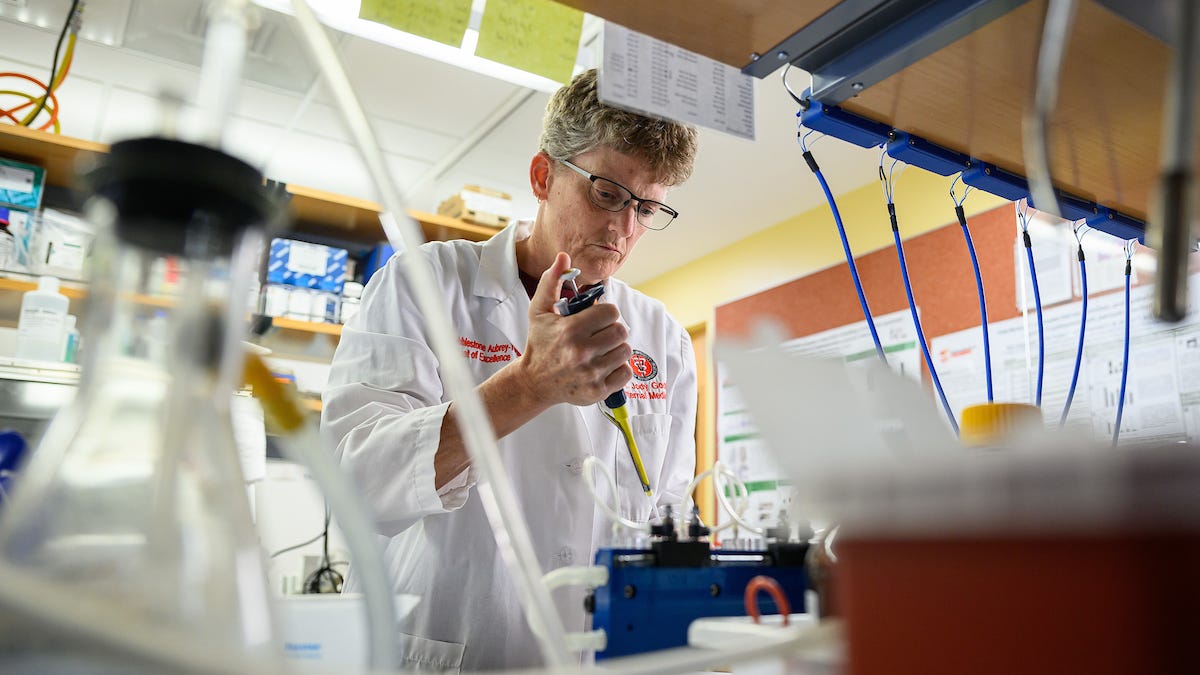Five-Minute Paper: Do Cats Have a Biliary Microbiome?
NC State researchers probe the feline gallbladder for hidden bacteria
Dear Readers: This is a new post type I am debuting where I break down a single research paper into a digestible synopsis that could be read in just a few minutes. Leave a comment or shoot me an email to let me know what you think about this format! —Eric
The Study:
What is this study about?
The researchers aimed to investigate any differences in the bacterial populations of bile between healthy cats and those with hepatobiliary disease. This is an important research question because bacteria are thought to be the cause of neutrophilic cholangitis, the most common type of this disease in cats, yet there is concern traditional tests like culture may miss some infections.
Who did the research?
This was a collaborative effort by veterinarians at the North Carolina State University (NCSU) College of Veterinary Medicine as well as microbiome researchers at the NC State Department of Molecular Biomedical Sciences and the University of North Carolina at Chapel Hill.
Who paid for it?
The research was funded by two grants:
An ACVIM Resident Research Award (sponsored by the Purina Institute)
An NIH National Institute of Diabetes and Digestive and Kidney Diseases grant
The authors did not declare any conflicts of interest.
What did they do?
Bile samples were collected from:
43 cats with suspected hepatobiliary disease (ultrasound-guided aspirates of the gallbladder (GB))
17 healthy control cats (collected surgically post-mortem from animal control cats euthanized for reasons unrelated to the study; see Figure 1 below)
Technical controls included needles and surgical equipment that mimicked collection procedure but did not sample bile/GB
This was key to ruling out background contamination!
Bile was evaluated by cytology, bacterial culture, & bacterial 16S rRNA sequencing
Bacterial sequencing results between groups compared by “decontam prevalence method” in R statistical software
What did they find?

Abdominal ultrasound
40/42 (95%) of sick cats had evidence of biliary tract pathology:
Gallbladder sludge (n = 38), gallbladder wall hyperechogenicity (n = 13), common bile duct dilatation (n = 13), and gallbladder wall thickening (n = 11)
Some cats also showed other GI tract abnormalities:
Liver disease (36-39%), intestinal disease (43%), pancreatic disease (52%)
Cytology
9/42 (21%) cats with cytology had visible bacteria (bactibilia)
8/42 (19%) had evidence of inflammation
Culture (aerobic and anaerobic)
All control cats had negative cultures
11/41 (27%) of cats with hepatobiliary disease had positive cultures, predominantly E. coli:
The two cats with cultures + for Staphylococcus epidermis and Peptostreptococcus did not correlate with cytology or sequencing and were considered likely contaminants from skin
Bacterial genome sequencing:
There were two distinct groups:
A low-diversity group of 6 cats dominated by E. coli reads
All of these were culture positive for E. coli and had visible bacteria on cytology
A high-diversity group that varied widely between the remaining cats
There was little correlation between culture and sequencing results for non-E. coli infections
What are the take home messages?
In this study, the vast majority of sequencing results were similar to background contaminants and did not correlate with other tests → These results suggest that cats do NOT have a core gallbladder microbiome (ie. it is sterile)
Standard aerobic and anaerobic culture seemed to pick up the true infections—there weren’t hidden pathologic infections picked up by sequencing
In a subset of cats positive for E. coli, co-infections may contribute to the disease process
Practice pearl: Cats that have negative bile culture and no visible bacteria or inflammation likely have hepatobiliary disease from non-bacterial causes
Behind the Scenes
This article discusses the backstory behind this study and how it came from the interdisciplinary collaboration of the vet school with a microbiome expert who has a background in physics! This is a great illustration of the concept of “range” I’ve previously written about 🤓







